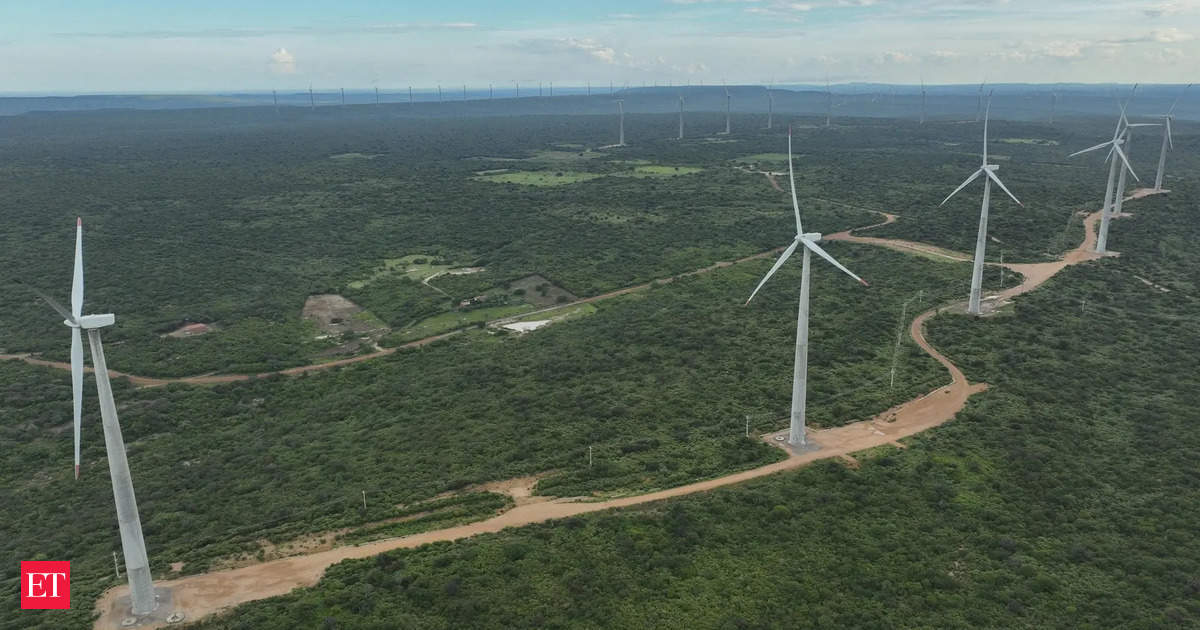It illustrates the difficult balance facing India, the world’s third-largest emitter of greenhouse gases, as it struggles to increase its non-fossil fuel capacity to curb the growing impacts of climate change.
“Big companies came here and built windmills, but they are of no use to us,” said Nena Ram, a 65-year-old cattle herder, describing an age-old farming system upended by the giant turbines.
The country is suffering increasing devastation from heat waves, floods and droughts, phenomena that climate scientists say are exacerbated by rising global temperatures.
But those of areas used for renewable energy The production says its needs have been sacrificed for the common good.
In the West Rajasthan state, where most of the Thar Desert is located, including the loss of grazing land and damage to sacred groves called “orans.” The desert oases, protected by the community for centuries, collect water critical to their economy based on herding camels, cows and goats. But herders say heavy construction trucks damage water sources, shrinking pastures and further drying out the land.
The contribution of farmers like Ram to greenhouse gases is a far cry from that of the smoke-emitting giants of India’s coal-hungry heavy industry.
He’s fighting off a brutal double whammy.
First the consequences of climate change hit him. Then the mitigation efforts to combat it hit him.
‘Paying the price’
The deserts surrounding Rajasthan’s Jaisalmer district are dotted with hundreds of turbines, one of India’s largest onshore wind farms.
Rajasthan has the capacity to supply five gigawatts (GW) of wind power to the grid, according to government figures.
Many turbines are owned by Indian conglomerates, including the Adani Group and Suzlon.
The companies say they are supporting India’s national push to transition to renewable energy while also supporting communities affected by construction.
Suzlon says it provides “sustainable development to the villages around its wind farms,” including health, education and livestock support projects.
Adani says it is “deeply committed” to the community, supporting schools and clean water programs.
But farmers complain bitterly that the turbines were built on community grazing land.
Milk production has also declined.
“Farmers are paying the price,” said Jitendra Kumar, who works at a local health clinic.
“Their lands were taken away. Windmills are occupying the lands intended for cattle grazing.”
‘Living in the dark’
Power lines crisscross the desert around Jaisalmer, a district home to some 670,000 people, according to the latest census.
But it suffers frequent power cuts, sometimes for days at a time.
Residents say the power is being channeled to meet growing demand in industrial centres and big cities.
“We live our lives in darkness,” said local environmental activist Sumer Singh Bhati.
“We have electricity for only two hours a day… We are desperate for light.”
Power cuts are unbearable during the summer. Temperatures sometimes reach 50 degrees Celsius (122 Fahrenheit).
India suffered its longest heatwave on record this year, according to government weather experts.
They warn that increasingly oppressive temperatures will be seen in the future.
India aims to increase its fossil-free power capacity to 500 GW by 2030 and has pledged to achieve a net-zero emissions economy by 2070, two decades later than much of the industrialised West.
According to government figures, renewable power plants are being built at a rapid pace, with capacity increasing from 76 GW to 203 GW in the past decade. About a quarter of that amount comes from wind power.
But reaching the 500 GW renewables target requires large-scale expansion.
‘How will we survive?’
These statistics mean little to residents living near the towering turbines, who describe them as an “incursion by the white structures.”
Environmental activists say that although outsiders see the desert as a dead zone, it is an area rich in biodiversity.
Locally revered species such as the critically endangered Great Indian Bustard face extinction.
The once-common giant brown and white birds are flying toward overhead power lines.
Parth Jagani, an environmental activist from Jaisalmer, said numbers had plummeted over the past 25 years, with only 150 remaining nationwide.
“Once windmills and power lines were installed, their mortality increased,” Jagani said.
In 2021, the Supreme Court He ordered power lines to be installed underground in key bird breeding areas.
But the government filed a petition and overturned the decision, arguing that it would hamper renewable energy goals.
Villagers have erected a monument in memory of the bird: a statue of a solitary bustard.
“If they take away our birds and animals, what will we do?” Ram said, smoothing his long grey moustache.
“How will we survive?”
Disclaimer:
The information contained in this post is for general information purposes only. We make no representations or warranties of any kind, express or implied, about the completeness, accuracy, reliability, suitability or availability with respect to the website or the information, products, services, or related graphics contained on the post for any purpose.
We respect the intellectual property rights of content creators. If you are the owner of any material featured on our website and have concerns about its use, please contact us. We are committed to addressing any copyright issues promptly and will remove any material within 2 days of receiving a request from the rightful owner.

